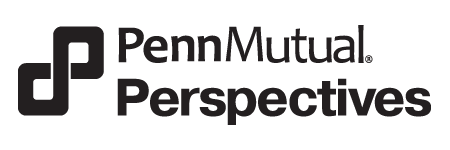Meeting the Unique Financial Needs of Medical Professionals
With close to 900,000 practicing physicians in this country, and with the average primary care doctor making $195,000 and the average specialist $284,000 a year, it’s no wonder that many financial professionals look at doctors and other medical professionals as potential clients.
But medical professionals have unique financial needs, and financial professionals looking to work in this market must first understand these differences if they are to be successful. Here are some of the key things our practice has learned about working with this niche market.
Doctors work irregular hours. First, doctors keep very different hours than most other professionals. They’re not like a lawyer or even a business owner, where the workweek ends on Friday at 5:00 or 6:00 p.m. Doctors could be working seven days on, seven days off. Or they could be on-call on a Friday night, or working all weekend and off Monday and Tuesday. To be the best resource possible for their physician clients, financial professionals need the flexibility to adapt to such schedules.
Physicians don’t always have a lot of time. I often have calls with clients at 9:00 or 10:00 at night, after my kids have gone to sleep, or I might meet with them on a Saturday or Sunday. That’s what I have to do because, otherwise, there might not be another time to meet for three or four weeks.
Doctors’ peak earning years are much shorter than other professions. Most physicians go through at least ten years of training after college before they’re really out in the work world. There’s four years of medical school, then at least three to four years of residency. Some then do another three or four years of fellowship. Doctors are not outside of this “training” environment until they are in their mid-30s. While most professions allow for a 40-year span of work, most doctors have only 30 years of working before they hit retirement age.
Imagine, most doctors have been working for under $60,000 a year for ten years while training, and now they have an employment contract for $350,000. In addition, the vast majority of doctors come out of training with $200,000 or more in student loan debt and less than $10,000 in the bank. Is it surprising that many doctors have trouble getting their financial house in order?
Doctors often lack experience in personal finance. During their training, almost 90 percent of their time, energy and effort is concentrated on becoming a doctor, with complete blinders on for anything else. Their education, on the financial planning side, insurance side, investment side, is often extremely limited unless they had parents or siblings who provided education at a young age.
The interesting thing about physicians is, you can meet a physician who is 45 or one that is 25 and, although their economics are different, many are at the same exact point: They may not have any real direction or plan with their finances. But when they come to me, they really are convinced they need to work on their finances. I enjoy working with doctors, because they genuinely want to get to a better place.
Doctors are one of the largest purchasers of disability insurance. This is especially of interest to doctors going through their residencies and fellowships. Most are also big proponents of life insurance as well. I think working in a medical setting gives a deeper understanding of the value of life and good health.
The financial needs of doctors are changing, and financial professionals need to change as well. Doctors’ offices were once the quintessential small business. Today, that’s absolutely changed in the opposite direction. Unless you’re talking about certain subspecialties — gastroenterology, dermatology, orthopedics, urology, dentistry, psychiatry, or other niche specialties — the vast majority of new doctors are not starting their own independent practices anymore. Large hospitals and healthcare groups are dominating nationwide.
The changes to the healthcare profession have forced us, as financial professionals, to shift the focus of our business. As an example, 20 years ago the firm was built around pension planning and review of benefits. These services are certainly still part of our practice for our older clients; however, younger physicians want help with investment management, future goals and organization. Their benefits are provided by the hospital or healthcare group. As a result, we began a joint venture with Roosevelt Investment Group, a $6 billion investment firm, to bring investment management expertise in house. There’s going to be such a push in this direction that we need to have an A player in the investment world to separate ourselves from the competition.
As a firm, we continually research new tools and services that fit the lifestyles and the necessity of our physician clients. Everyone has smart phones or tablets, and it makes sense to build such technologies into our client interactions. We use GoToMeeting, Skype, and other electronic media much more than ever before. We have clients all around the country, and we want to be able to see their faces when we speak with them. We’re also expanding our use of tools that support clients who want the ability to touch, feel and act on their own financial holdings, whether that’s eMoney, Wealth in Motion or some other new technology. Virtual connections can be a great tool if used properly.
At the heart of it, medical professionals face three big financial challenges. They come out of training with a lot of student loan debt, they want to save for a home, and they want to start a family. That’s not so different than the rest of us, but these things are compressed into a shorter amount of time. Add to that the shorter time to prepare for retirement, and you have a financial situation that requires careful thought. Working with doctors and other medical professionals can be very rewarding for a financial professional, but they do have unique financial needs and a demanding work schedule, both of which must be taken into account to build a successful relationship.
This post is for informational purposes only and should not be considered as specific financial, legal or tax advice. Depending on your individual circumstances, the strategies discussed in this presentation may not be appropriate for your situation. The information in this material is not intended as tax or legal advice. Always consult your legal or tax professionals for specific information regarding your individual situation.
3131499CC_JUN22






